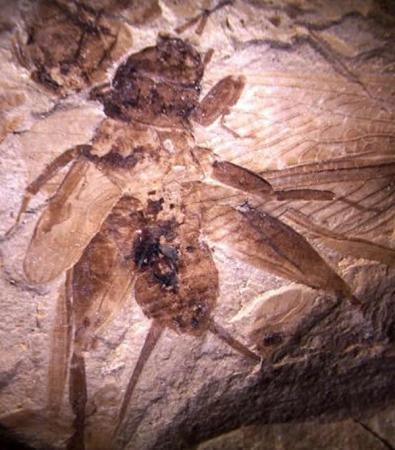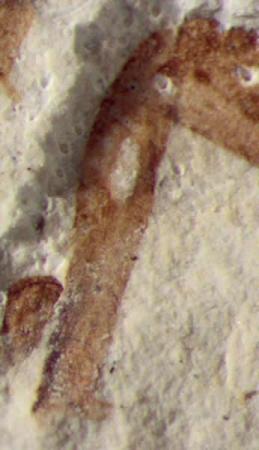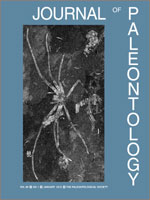
绿河组保存精美的昆虫化石

化石昆虫腿上的耳朵
昆虫的听力的是如何起源的?长期以来一直困扰着古昆虫学家们,最近,5000万年前的蟋蟀(cricket)和美洲大螽斯(katydid)化石——可能是保存昆虫听力信息最好的化石——向研究人员揭开了昆虫耳朵演化的神秘面纱。
芝加哥伊利诺伊州大学的R. Plotnick介绍说:“昆虫的耳朵非常特别,草蜢的耳朵长在腹部,草蛉的耳朵长在翅膀上,寄蝇的耳朵则藏在下巴底下,昆虫的耳朵几乎可以长在除了头部外身体的任何部位。”
昆虫的耳朵至少有17个相互独立的演化谱系,研究人员正试图寻找不同昆虫耳朵出现的确切时间,它们的祖先在耳朵演化中起到了什么贡献作用。现代昆虫的耳朵拥有多种用途,除了用来接听彼此的声音以外,还可用于声音定向,逃避捕食者,如某些昆虫可以通过接收蝙蝠的声纳来躲避捕食的威胁等。昆虫灵敏的听力为其在严酷的生存竞争中带来了一定的优势。
过去一般研究认为,许多昆虫听觉的出现是与蝙蝠的出现有关,在蝙蝠演化早期,昆虫的耳朵出现相对较少,而在此之后,昆虫的耳朵相应增多了。那么是否正是蝙蝠的出现促使了昆虫耳朵的进一步演化呢?在本研究以前,关于昆虫耳朵的化石证据非常的少,并且描述都比较模糊。
怀俄明州、犹他州和科罗拉多州的绿河组地层是Plotnick极其合作研究者Smith重点研究的地层,这段地层正是发现最早期蝙蝠化石的地方。
这里的细粒沉积物保存了生活在50万年前的各种生物化石,并且保存情况非常完好,对绿河组化石已有15年研究经验的Smith说道:“你可以观察到化石非常微小的细节,包括翅膀的翅脉甚至腿上的毛。”
在此次研究中,研究人员对超过500块保存在博物馆里的科罗拉多州绿河组蟋蟀和美洲大螽斯化石标本进行了逐一搜查,这两种昆虫的耳朵都长在它们的前腿膝盖往下一点的地方。Plotnick说道:“用肉眼就能看到它们的耳朵,就像针眼一样。”
这些昆虫化石的耳朵大小都在半毫米左右,这与现生蟋蟀和美洲大螽斯的耳朵在大小,形状和位置上都完全一致。
此次研究结果表明,这两种昆虫耳朵的进化要早于蝙蝠祖先的出现,接收蝙蝠声纳信号的能力要更晚的时间才出现。
为了更进一步了解昆虫耳朵的演化历程,其它种类化石昆虫的耳朵将是研究人员未来的研究重点。

 Exceptionally Preserved Fossil Insect Ears from the Eocene Green River Formation of Colorado
Exceptionally Preserved Fossil Insect Ears from the Eocene Green River Formation of Colorado
Roy E. Plotnick and Dena M. Smith
Tympanal ears in insects are important for both intraspecific communication and for the detection of nocturnal predators. Ears are thought, based on modern forms, to have originated independently multiple times within insects and can be found on multiple regions of the body. Here we describe and document the exceptionally well preserved tympanal ears found in crickets and katydids from the Eocene Green River Formation of Colorado, which are virtually identical to those seen in modern representatives of these groups. These specimens are among the best preserved insect ears in the fossil record and establish the presence of ears in two major clades of Orthoptera 50 million years ago. Also discussed and evaluated are previously described insect ears from the Mesozoic and the implications of the findings of the present study for studying the evolution of ears within insects.
文献链接:https://www.bioone.org/doi/abs/10.1666/11-072.1?journalCode=pleo







